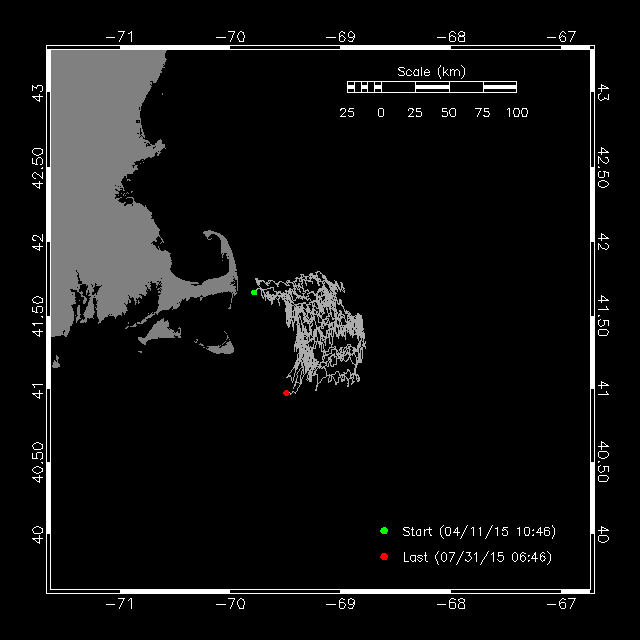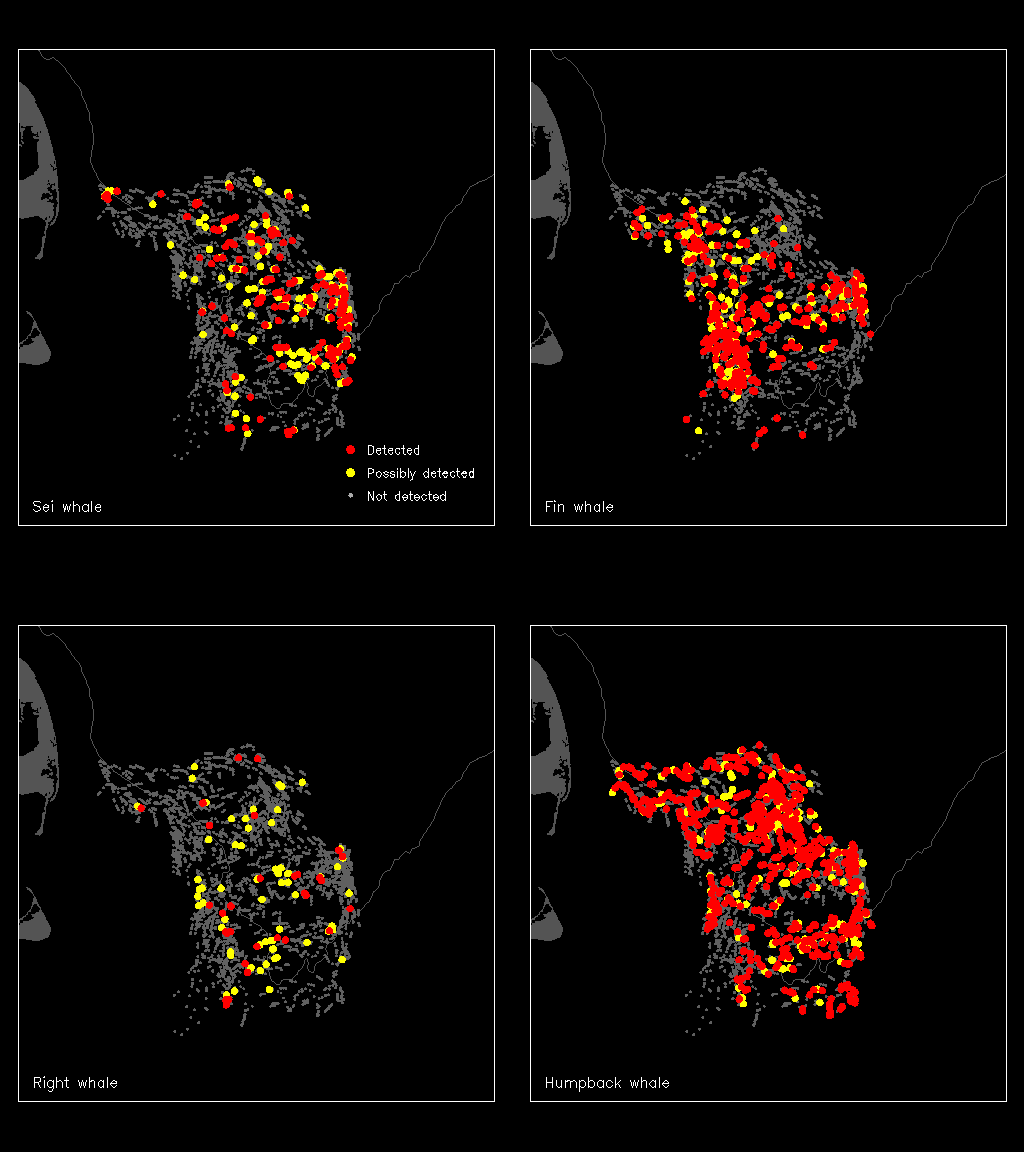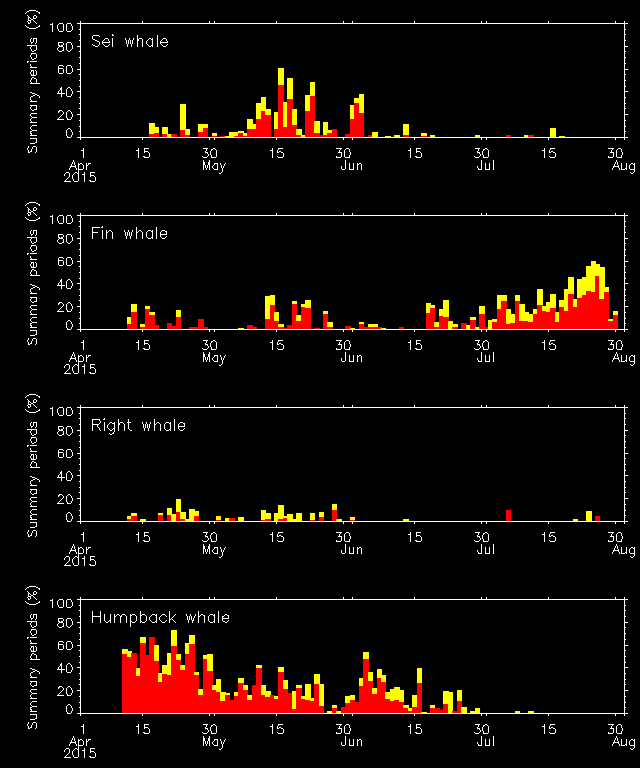Autonomous Real-time Marine Mammal Detections
Woods Hole Oceanographic Institution
Great South Channel, Gulf of Maine, Spring 2015
Study objectives
A Slocum G2 glider was deployed in the Great South Channel in the southwestern Gulf of Maine to locate highly endangered North Atlantic right whales in advance of a NOAA Northeast Fisheries Science Center cruise to the region. The objectives of the cruise are to photo identify, biopsy, and tag right whales, as well as to conduct visual surveys in the vicinity of the Slocum glider and a Liquid Robotics wave glider. The Slocum glider is being used as a reconnaissance tool to improve the efficiency of locating and studying whales. We are also evaluating the accuracy of near real-time detections obtained by the DMON/LFDCS carried on the Slocum and wave gliders.
Principal Investigators: Cara Hotchkin (NAVFAC Atlantic), Sofie Van Parijs (NEFSC), Peter Corkeron (NEFSC), and Mark Baumgartner (WHOI).
Platform we03
Platform location:

Daily analyst review:
| | Detected |
| Possibly detected |
| Not detected |
Analyst-reviewed species occurrence maps:

Analyst-reviewed time series:

Analyst-reviewed diel plot:

Links to detailed information for platform we03:
Automated detection data
DMON/LFDCS diagnostics
Platform diagnostics
Questions
Please email Mark Baumgartner at mbaumgartner@whoi.edu. For a general desciption of the detection system and the autonomous platforms, visit dcs.whoi.edu.
Acknowledgements
The Slocum glider was expertly prepared and deployed by Ben Hodges (WHOI). Critical engineering support was provided by Keenan Ball, Jim Partan, and Tom Hurst (WHOI). Support for the deployment and operation of the glider is provided by the Department of Defense's Environmental Security Technology Certification Program (ESTCP) and the Navy's Living Marine Resources Program. The DMON instrument was developed by Mark Johnson and Tom Hurst at WHOI. Mark Johnson was responsible for developing the application programming interface (API) for the DMON, and coded the initial DMON implementation of the pitch tracking algorithm described in Baumgartner and Mussoline (2011). Support for the development and testing of the DMON/LFDCS was provided by the Office of Naval Research, and additional support for integration and testing was provided by the NOAA National Marine Fisheries Service Advanced Sampling Technologies Working Group in collaboration with the Northeast Fisheries Science Center's Passive Acoustics Research Group (leader: Sofie Van Parijs).
Home



